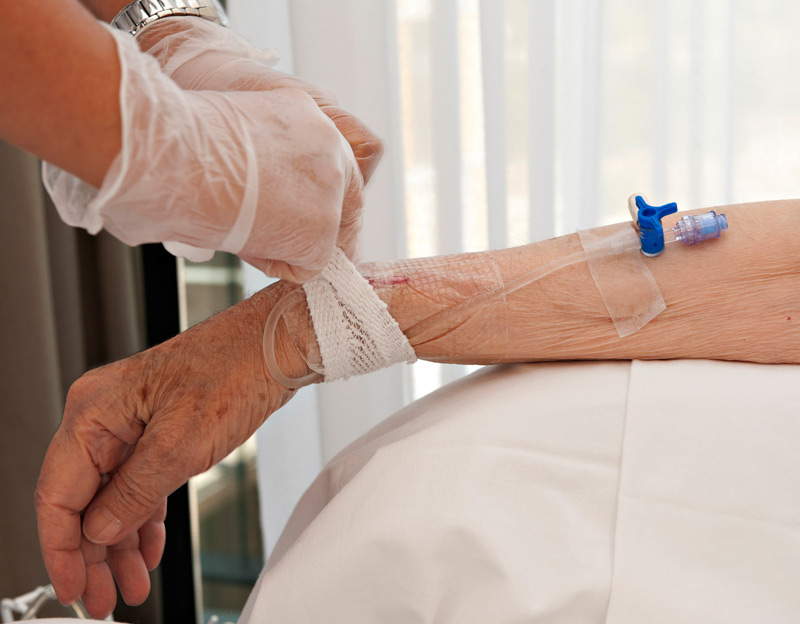

IV therapy may encompass IV injections and IV infusions. Each type of therapy is done for specific patient needs. For example, IV injections involve the rapid injection of a one-time medication into a vein. IV infusion, on the other hand, can be provided in the form of drip infusion or pump infusion.
Drip Infusion IV Therapy
This type of IV therapy utilizes gravity to deliver a constant stream of fluid or medication over a set period of time. Treatment is provided using a fluid bag hung on a drip stand that is attached to the IV line.
The fluid bag contains the treatment and the drip chamber is used to count the drip rate as well as to prevent air from entering the bloodstream. Drip rate refers to the number of drops administered per minute. The roller clamp is used to increase or decrease the drip rate.

Pump Infusion IV Therapy
This form of IV therapy involves attaching a pump to the IV line to control the delivery of treatment into the body. Pump infusion may be delivered using syringe infusion pumps and volumetric pumps.
Syringe infusion pumps control the rate of push of a syringe’s plunger, thereby controlling the rate of administration of treatment over a period of time.
Volumetric pumps use IV drips and additional pumps to control the infusion rate.
Who Needs IV Therapy?
Patients may need IV therapy for the following reasons:
What To Expect During IV Therapy At Home
At Calaid Home Healthcare, LLC, we have a team of nurses that visit patients’ homes to provide IV therapy. During each visit, the nurse will check to make sure the IV is working properly and look for signs of infection. The nurse will then administer the medication or other fluid in one of the following ways:
- A fast bolus, in which the medicine is given rapidly or all at once.
- A slow infusion, in which the medicine is given slowly over an extended period of time.
After administering the medication, the nurse will wait to see if the patient has any bad reactions. If the patient isn’t showing any signs of adverse side effects, then the nurse will leave the patient’s home.
Used needles will be disposed of in a needle, or sharps, container. Used IV tubing, gloves, bags, and other disposable supplies will be properly ans safely disposed of.
Risks of IV Therapy
It’s important for the nurse and patient to look out for the following potential side effects of IV therapy:
- A hole in the skin at the IV injection site. Medicine or fluid may enter the tissue around the vein and harm the skin or tissue.
- Swelling of the vein that could potentially lead to a blood clot.
If patients are experiencing a problem with their IV, they can call Calaid Home Healthcare, LLC for help.
